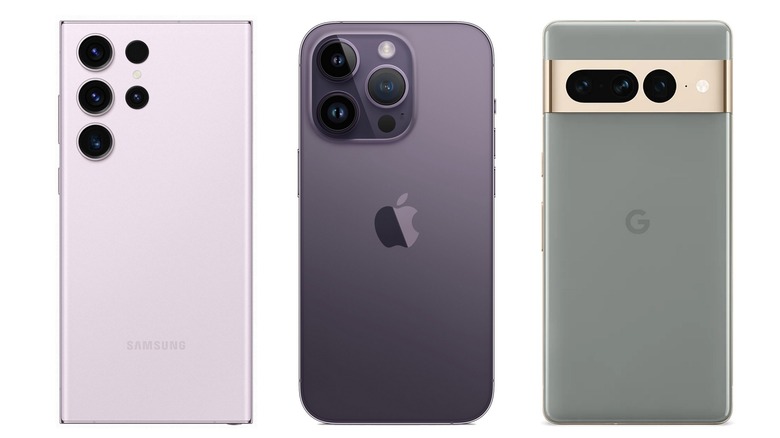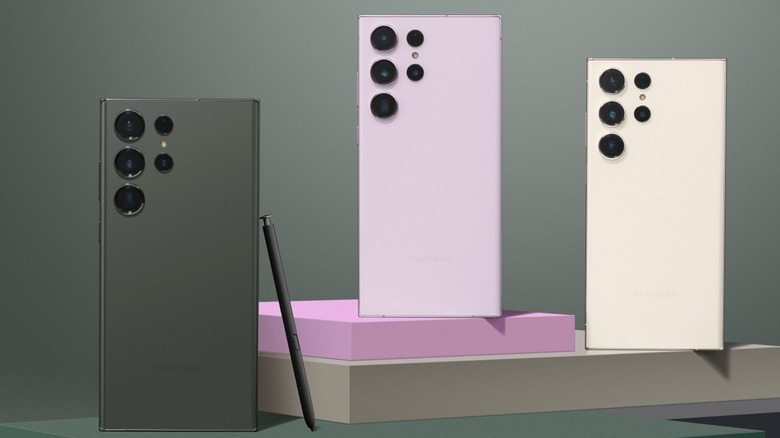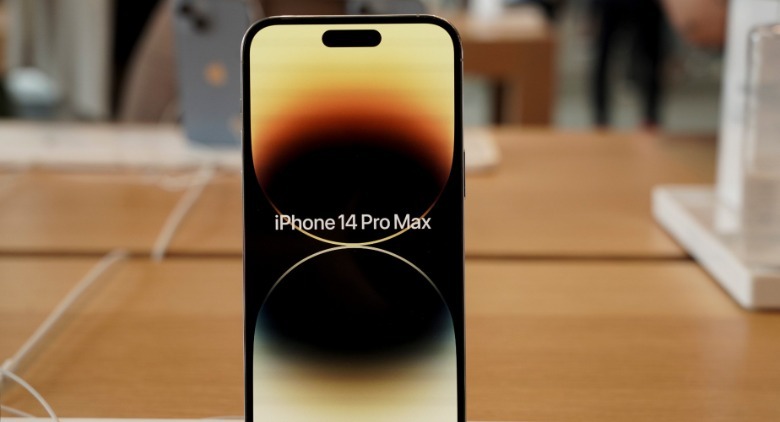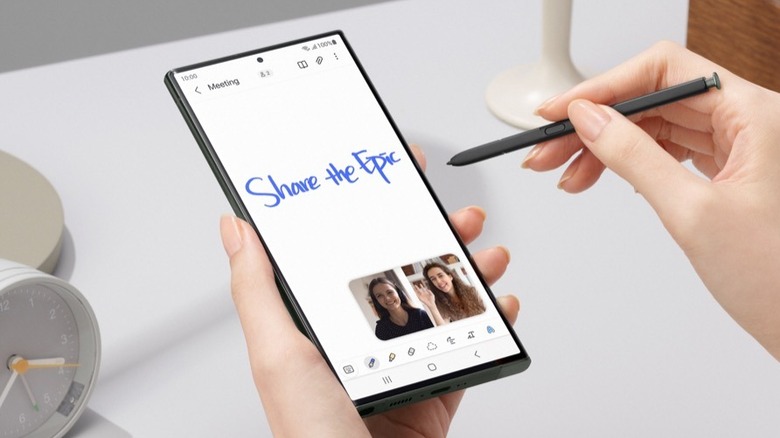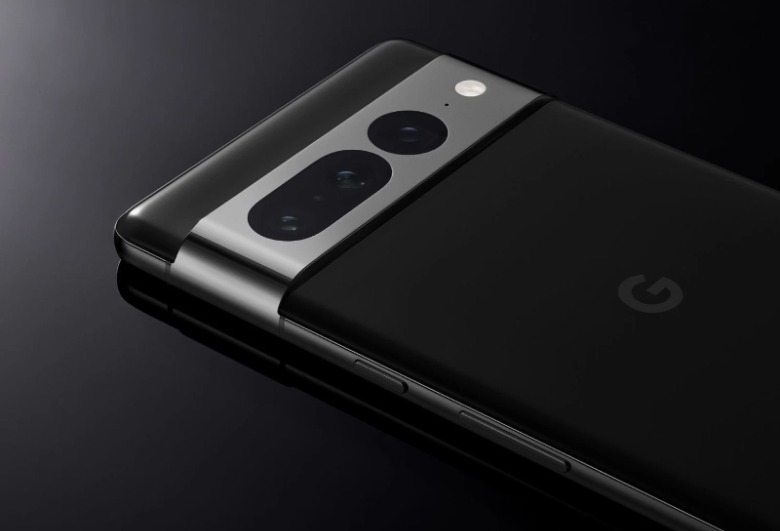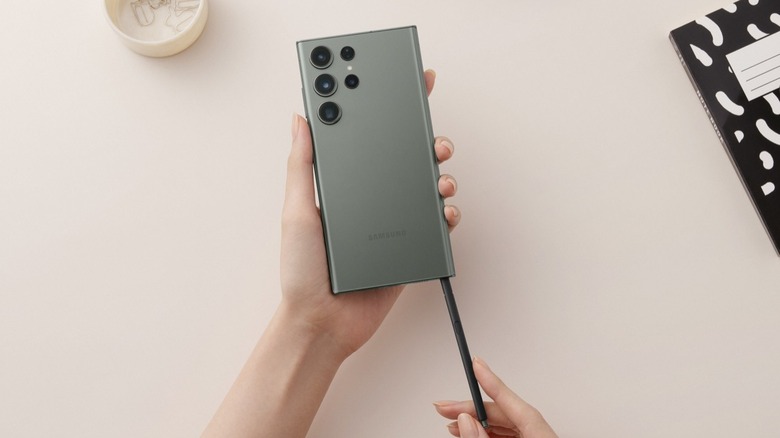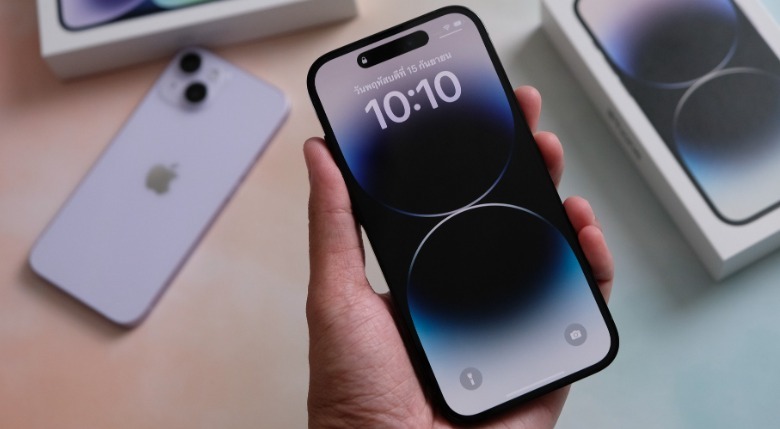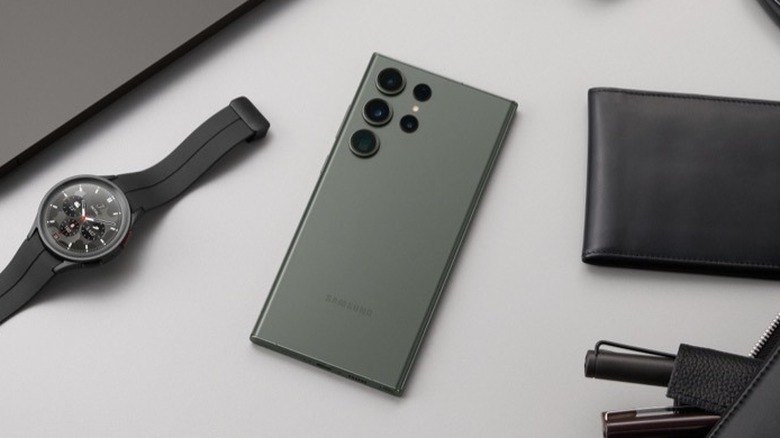Samsung Galaxy S23 Ultra Vs. iPhone 14 Pro Max Vs Pixel 7 Pro Specs Showdown
Samsung has officially introduced its latest Android flagship — the Galaxy S23 Ultra — at its Unpacked event, alongside two watered-down siblings going for a lower price point. Staying true to its camera centric roots, the newest top-tier offering from Samsung comes armed with an industry-leading, 200-megapixel camera sensor, coupled with a handful of new software-side tricks to enhance the photography experience. The company hasn't change much in terms of the looks compared to its predecessor, but under its hood, the Galaxy S23 Ultra comes armed with Qualcomm's next-gen Snapdragon 8 Gen 2 SoC.
You get all the flagship-tier bells and whistles, such as a pixel-dense screen, plenty of RAM and storage, fast mmWave 5G connectivity, wireless charging support, and sturdy premium materials going into its build. It's obvious Samsung has set its sight on one-upping the iPhone 14 Pro Max and the Google Pixel 7 Pro. If you've been enamored by Samsung's stylus-toting phone, but want to weigh your options against what Google and Apple have to offer, here's a quick comparison of their core specs to ease your choice.
Display face-off
Samsung has fitted its big bad Android flagship with a 6.8-inch Dynamic OLED screen that can go up to 1,750 nits of peak brightness. At the top is a circular hole-punch cutout for the selfie camera, while the screen refresh rate is capped at 120Hz, but it can go all the way down to 1Hz based on the usage scenario. The screen resolution is 1440x3088 pixels, which results in a pixel-density of 500 ppi.
The iPhone 14 Pro Max offers a slightly smaller 6.7-inch OLED screen with a pill-shaped hole drilled at the top to accommodate the front camera and Face ID sensor assembly. The screen resolution is 2796x1290 pixels, which translates to a lower pixel density of 469 ppi, while the refresh rate goes up to 120Hz. The peak brightness, however, eclipses that of the Galaxy S23 Ultra, reaching up to 2,000 nits.
Google's Pixel 7 Pro follows the same design language for selfie camera placement as Samsung, but the screen is slightly smaller at 6.7-inches. The display is sharper than the rivals, thanks to a resolution of 3120x1440 pixels, which delivers a pixel density of 512 ppi. The refresh rate is again 120Hz, while the outdoor brightness output maximizes at a respectable 1,500 nits.
Camera department
Samsung has equipped the Galaxy S22 Ultra with an optically stabilized, 200-megapixel primary camera, which means it offers at least four times as many pixels as Google and Apple's best cameras. It is assisted by a 12-megapixel ultrawide-angle snapper, and you also get a pair of 10-megapixel telephoto cameras: One of them delivers 3x optical zoom output, while the other one relies on the periscope lens mechanism to achieve 10x optical zoom range — far ahead of what Google and Apple have to offer. Selfies have been deputed to a 12-megapixel snapper that can record 4K 60fps videos, while the rear camera allows 8K video capture, too.
The iPhone 14 Pro Max leads the imaging charge with a 48-megapixel main camera. It is accompanied by a 12-megapixel secondary snapper for ultrawide photography, and an optically stabilized 12-megapixel telephoto camera that can provide 3x optical zoom-in output. The front camera relies on a 12-megapixel sensor, complete with 4K 60fps video shooting ability. Apple doesn't do 8K video, but the iPhone 14 Pro Max's rear camera can record 4K HDR videos with Dolby Vision.
Google Pixel 7 Pro buyers get a 50-megapixel main camera at the back, backed by Google's well-praised computational photography chops. The ultrawide-angle camera relies on a 12-megapixel sensor. Just like Samsung, the Pixel 7 Pro also offers a periscope-inspired folded lens zoom camera, but with a much higher 48-megapixel resolution and 5x optical zoom range. The front 10.8-megapixel camera is capable of 4K video capture at 60fps, while the rear cameras also peak at the same resolution and frame rate figures for video recording.
What's inside?
Samsung ships the Galaxy S23 Ultra with Qualcomm's Snapdragon 8 Gen 2 SoC inside. There isn't an Exynos version on the table, at least for the U.S. market. Samsung touts a 40% gain in graphics performance and real-time ray-tracing for enhanced visuals while playing games. You get to choose between 8GB + 256GB, 12GB + 512GB, and 12GB + 1TB RAM and storage configurations. A 5,000mAh battery runs the show, complete with wireless charging support.
Ticking inside the iPhone 14 Pro Max is Apple's own A16 Bionic chip. Apple sells its flagship in four storage configurations: 128GB, 256GB, 512GB, and 1TB, each with 6GB of RAM. We don't officially know the battery capacity, but you do get support for wireless charging, both via MagSafe and Qi-certified pads.
Coming to the Pixel 7 Pro, it comes fitted with the in-house Tensor Gen 2 chip, with the Titan M2 co-processor ticking alongside for handling sensitive tasks. There's 12GB of LPDDR5 RAM inside, while the storage options on the table are 128GB and 256GB. There's a 5,000mAh battery inside, complete with 30W wired charging and wireless charging support.
How much do you pay?
All three phones come rocking an IP68-certified build with a glass-and-metal sandwich design. Apple protects the iPhone 14 Pro Max with Ceramic Shield glass, while the Pixel 7 Pro puts its faith in the hands of Corning's Gorilla Glass Victus. The Galaxy S23 Ultra goes with Corning's next-gen Gorilla Glass Victus 2 protection. However, the biggest edge it offers over the rest is stylus input support.
Samsung serves the Galaxy S23 Ultra in Phantom Black, Green, Cream, and Lavender colors. The phone starts at $1,199.99 and will be up for grabs starting on February 17, 2023 in the US. The iPhone 14 Pro Max is sold in Space Black, Silver, Gold, and Deep Purple shades. It is currently on the shelves with a starting price of $1,099. Google's Pixel 7 Pro is available in a trio of eye-catching color schemes including Obsidian, Snow, and Hazel. It starts at a significantly lower asking price of $899 in the US market.
Overall, if you're eyeing the flashy new Samsung flagship, the biggest benefit it offers is a more powerful camera hardware and a feature-loaded stylus that lives right inside its own garage on the phone.
